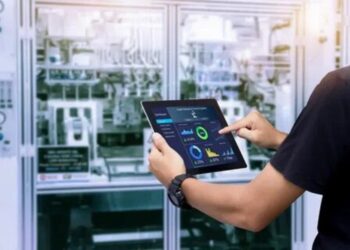The “Long Duration Energy Storage LDES Markets 2023-2043: Grid, Microgrid Delayed Electricity 6 Hours to Seasonal” report has been added to ResearchAndMarkets.com‘s offering.
Grids and microgrids waste precious wind and solar power at times of excess. That will get worse as they adopt a higher percentage notably of solar because it drops fastest in cost and is anyway best for emerging nations because they are mostly in the tropics.
The antidote is analysed in the uniquely comprehensive report, “Long Duration Energy Storage LDES Markets 2023-2043: Grid, Microgrid Delayed Electricity 6 Hours to Seasonal”.
Free of excessive mathematics and nostalgia, the report gives deep commercial insights for investors, industry – from material suppliers to system operators – and other potential participants. See many new infograms, comparison charts, roadmaps and graphs, with terms explained both in the glossary and the text. Learn underinvested sectors and gaps in the market.
Two things matter most: the delay time to cover such things as solar dead at night, wind dead for weeks, and the duration of subsequent discharge at full rating which is a similar or somewhat lower figure taken as GWh divided by GW. It is a moving target. Today energy storage for 6-10 hours is a major new market but as the percentage of wind and solar in a system increases, longer needs become substantial.
For example, UK electricity prices jumped in 2020 partly because wind was dead for months. The need will change right up to seasonal storage for solar feeble in winter creating its own huge storage market within 15 years. Broadly speaking, the longer the delay the more electricity must be stored and therefore that costs must drop, eventually 90%. Your radically new approaches are eagerly sought, from materials to systems.
The report surfaces many surprises. For instance, some of the 11 main candidate technology families can perform both long and short-term storage in one system and some cannot. That should be factored into investment decisions. Almost continuous zero-emission sources are costed in isolation and starved of money but sometimes they can be lower cost – taken holistically – than a purely storage solution. Think advanced geothermal, ocean power, later solar from outer space and others in the report.
Another surprise is that there may even be a market for storage beyond seasonal. We have strategic oil and gas reserves stored for years and discharging for a month or two. As electricity takes over, it is both logical and potentially practicable to consider strategic electricity reserves.
Probable winning technologies are identified in the emerging $250 billion market, those with a large secondary opportunity and two losers. The report finds that some storage technologies are underfunded given their huge potential. One is pumped hydro storage reinvented for wider deployment – in mines, pressurised into rock, under water, even using heavy water up mere hills.
Citing research and interviews, the report shows why it is wrong to assume technologies such as compressed air cannot viably perform seasonal storage in due course but it identifies hidden environmental and other risks with some other strongly promoted options.
Key Topics Covered:
1. Executive summary and conclusions
1.1. Purpose and scope of this report
1.2. Methodology of this analysis
1.3. Definition and need
1.4. LDES toolkit
1.5. Basic technology choices for LDES
1.6. Rating for LDES technology families against 20 funding and siting criteria
1.6.1 Nine technology families vs 17 criteria
1.6.2 Equivalent efficiency vs storage hours for LDES technologies
1.6.3 Available sites vs space efficiency for LDES technologies
1.7. Contenders for largest number of LDES sold
1.8. Lessons from relative investment by company and technology
1.9. Key conclusions
1.10. LDES roadmap 2023-2032
2. Introduction
2.1. Overview
2.2. Trending to 100% zero-emissions renewable power and increased intermittency of supply
2.3. Curtailment may increase: avoidance strategies
2.4. Electric power basics to 2050
2.5. Mitigating the long-term intermittency of wind and solar power without storage
2.6. The toolkit for zero-emission power distribution and LDES
2.7. Increased LDES interest in 2022/3 as zero-emissions electricity takes over
2.8. Lessons from 2022 UK Government awards
2.9. Advances wind power to reduce need for LDES
2.10. Photovoltaics evolution and potential to reduce intermittency
2.11. Conventional hydropower going nowhere
2.12. Consensus on LDES options
2.13. Underwater Energy Storage UWES with SWOT appraisal
3. Long duration energy storage LDES
3.1. LDES definition and purpose
3.2. Required storage characteristics
3.3. Possible timing of LDES mass adoption in grids, microgrids, buildings 2023-2043
3.4. Basic technology choices for LDES
3.5. LCOS $/kWh trend vs storage and discharge time
3.6. LDES power GW trend vs storage and discharge time
3.7. Days storage vs rated power return MW for LDES technologies
3.8. Days storage vs amount MWh for LDES technologies
3.9. Potential by technology to supply LDES at peak power after various days
3.10. Available sites vs space efficiency for LDES technologies
3.11. LDES Council and publisher analysis of the technology of its members
3.12. LDES Council “technology provider” members’ capabilities and dreams compared
3.13. Publisher’s pie analysis of priorities and progress by LDES Council technology members
3.14. SWOT appraisal of long duration energy storage LDES 2023-2043
4. Compressed air CAES
4.1. Overview
4.2. Undersupply attracts clones
4.3. Market positioning of CAES
4.4. Parameter appraisal of CAES of LDES
4.5. CAES technology options
4.6. CAES manufacturers, projects and research
4.7. CAES profiles and appraisal of system designers and suppliers
5. Liquefied gas energy storage: Liquid air LAES or CO2
5.1. Overview
5.2. Principle of a liquid air energy storage system
5.3. Higher energy density but often higher LCOS than CAES
5.4. Hybrid LAES
5.5. Parameter appraisal of LAES for LDES
5.6. Increasing the LAES storage time and discharge duration
5.7. Highview Power UK with publisher’s appraisal
5.8. Highview Power in Australia, Spain, Chile, USA
5.9. Phelas Germany
5.10. LAES research: Mitsubishi Hitachi, Linde, European Union, Others
5.11. SWOT appraisal for LAES for LDES
5.12. Energy Dome Italy – carbon dioxide storage
6. Redox flow battery energy storage RFB
6.1. Overview
6.2. Reality check – RFB success and failure in LDES
6.3. Parameter appraisal of RFB for LDES
6.4. Types of RFB
6.5. The vanadium RFB chemistry and basics of RFB cost reduction
6.6. Invinity Energy Systems Canada
6.7. Lockheed Martin USA
6.8. Iron reflow battery: ESS Inc.
6.9. Swanbarton floating organic RFB UK
6.10. Organic RFB design
6.11. Carbon capture reflow battery: Agora Energy Technologies
6.12. RFB research thrust
6.13. SWOT appraisal of RFB energy storage for LDES
7. Hydrogen, ammonia, methane intermediary LDES
7.1. Overview
7.2. Hydrogen compared to methane and ammonia for LDES
7.3. Beware vested interests
7.4. The hydrogen economy vs electricity
7.5. Sweet spot for chemical intermediary LDES
7.6. Calculating success based on questionable assumptions
7.7. Mining giants prudently progress many options
7.8. For buildings, all options together would be too expensive
7.9. Technologies for hydrogen storage
7.10. Parameter appraisal of hydrogen storage for LDES
7.11. SWOT appraisal of hydrogen, methane, ammonia for LDES
8. Pumped hydro conventional and reinvented
8.1. Conventional pumped hydro PHES
8.2. Reinvented pumped hydro
9. Solid gravity energy storage
9.1. Overview
9.2. ARES LLC USA with publisher’s appraisal
9.3. Energy Vault Switzerland, USA with publisher’s appraisal
9.4. Gravitricity UK with publisher’s appraisal
9.5. SinkFloatSolutions France
9.6. Parameters appraisal of solid gravity energy storage SGES for LDES
9.7. SWOT appraisal of solid gravity storage SGES for LDES
10. Thermal storage ETES
10.1. Overview
10.2. Parameters appraisals of electric thermal energy storage ETES
10.3. LDES molten salt storage for concentrated solar: Chile, Australia, South Africa
10.4. Siemens Gamesa Germany and Stiesdal Denmark with publisher’s appraisal
10.5. Antora USA with publisher’s appraisal
10.6. SWOT appraisal of ETES for LDES
11. Advanced conventional construction battery ACCB for LDES
11.1. Overview
11.2. Parameters appraisal of conventional battery structure for LDES with new chemistries
11.3. Liquid metal – Ambri USA with publisher’s appraisal
11.4. Enervenue USA nickel hydrogen battery with publisher’s appraisal
11.5. Sodium-ion stationary batteries: China, India etc. with publisher’s appraisal
11.6. Form Energy USA iron air with publisher’s appraisal
11.7. SWOT appraisal of Na-ion and Fe-air for LDES
Companies Mentioned
- AgoraEnergy Technologies
- ALACAES
- Altris
- Ambri
- Antora
- APEXCAES
- ARES
- Azelio
- Baker Hughes
- BP
- B9 Energy Storage
- Breeze
- BrenmillerEnergy
- CAES
- Cavern Energy
- Cellcube
- Ceres
- Cheesecake Energy
- Chevron
- CNESA
- Corre Energy
- CPS Energy
- Crondall Energy
- E-zinc
- Echogen
- EnergyDome
- EnergyVault
- EnergyNest
- Enervenue
- Enlighten
- EOS
- ERCOT
- ESSTechnology
- Faradion
- FormEnergy
- Fortescue Metals Group
- GE
- Gravitricity
- GreencoGroup
- H2 Inc
- HBI
- Heatrix
- Highview Power
- HiNa
- Hochtief
- HuanengHighviewPower
- Huisman
- Hydrostor
- IEA
- ILIGroup
- InnoEnergy
- IOT Energy
- InvinityEnergy Systems
- JSC Uzbekhydroenergo
- Kraft Block
- Kyoto Group
- Largo
- Lazard
- Linde
- Lockheed martin
- Locogen
- Magnum
- Malta
- MAN Energy Solutions
- Magaldi
- Malta
- MGA Thermal
- MineStorage
- MitsubishiHitachi
- MSE International
- Natron
- Phelas
- Primus Power
- Quidnet Energy
- Rcam Technologies
- Redflow
- Reliance Industries
- RHEnergise
- RyeDevelopment
- SaltX Tech.
- SchmidGroup
- SensPumped Hydro Storage
- SherwoodEnergy
- SiemensEnergy
- SinkFloatSolutions
- Sintef
- Stiesdah
- Storelectric
- StorEnTechnologies
- StorTera
- Storworks Power
- Subsea7
- Sumitomo Electrical Industries
- Swanbarton
- Terrastor
- Tesla
- Tiamat
- Torc
- UET
- UniEnergy Techmologies
- VFlowTech
- Voith Hydro
- VoltStorage
- VRBEnergy













